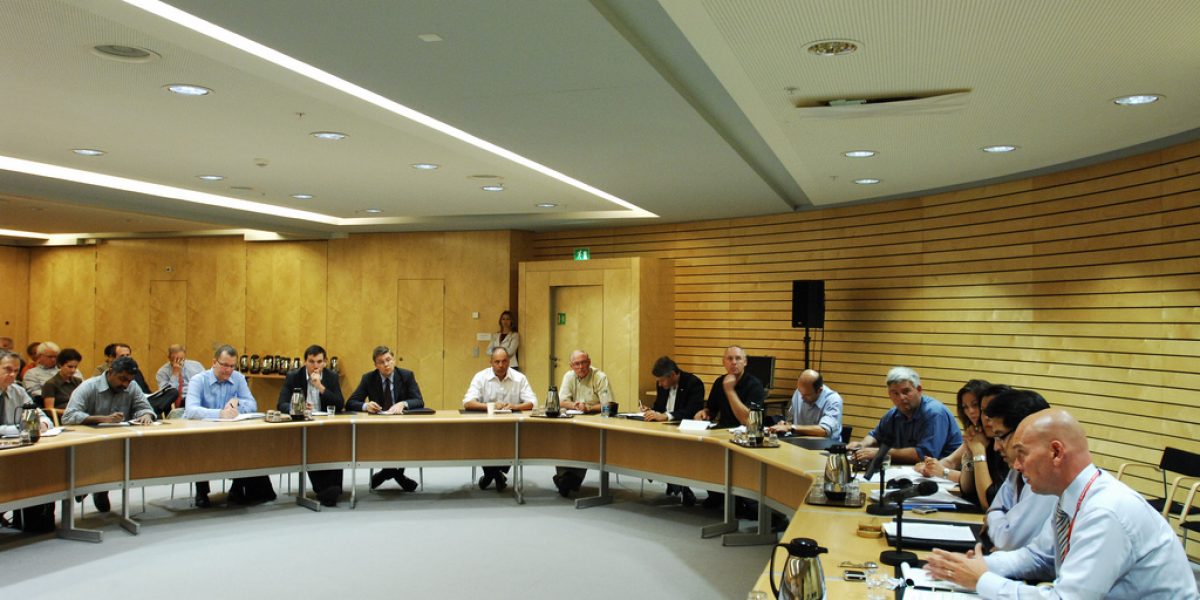With the US Congress seemingly bent on defying the world by holding onto lavish agricultural subsidies, it seems unlikely (although not impossible) a breakthrough will be achieved in the coming months. Therefore attention is turning to longer term plans to rescue the WTO from its malaise.
I recently participated in one such exercise: a conference at the WTO Secretariat in Geneva, entitled “Multilateralising Regionalism”. Economists have long debated whether the worldwide proliferation of free trade agreements (FTAs) undermines the WTO (“stumbling blocks”) or promotes it (“building blocks”); but they are in agreement that more FTAs means a proliferation of conflicting rules and incentives or what Jagdish Bhagwati famously dubbed the “spaghetti bowl effect”.
Traders should be concerned: each FTA has its own set of tariff phase-downs, rules of origin, and (sometimes) regulations. Why is this problematic? Because the developed world and parts of the developing world have moved decisively towards global sourcing arrangements and associated supply-chain management driven by multinational corporations’ (MNCs) sourcing strategies. At our conference the CEO of Ericson, the Swedish phone company, told us that his phones typically consist of 900 parts sourced from 60 countries, with the final product sold in over 90 countries. The same logic applies to a plethora of other products (cars, computers, etc).
Hence from an MNC’s standpoint FTAs do not accommodate global sourcing; rather they add to the confusion and administrative cost. Worse, they can divert trade from more efficient suppliers in non-favoured countries to FTA partners often chosen for foreign policy, not economic, reasons.
What can be done? The most obvious solution is to get the WTO working. It is the only organization that regulates trade on a global basis, albeit the rules are riddled with exceptions and special deals for both developed and developing countries. But the Doha round is in the doldrums and FTAs are supplanting it. Enter the notion of “multilateralising regionalism”, coined originally by Professor Richard Baldwin (coincidentally Bhagwati’s student decades ago). But it is easier said than done.
In Baldwin’s framework export-oriented MNCs pressure their governments to negotiate access into key trading partners markets; their governments trade access into the domestic market in return. The trade negotiators logic is simple: open your market and I’ll open mine, a process called “reciprocity”. Those export interests constitute a “juggernaut” which propels developed countries into negotiating more FTAs (a “domino effect”) but also to harmonise rules across FTAs in order to minimize the spaghetti bowl problem. The European Union has been the primary exponent of this logic through its successive expansions and negotiations with a range of external partners, but in recent years the United States and Japan have joined in.
But there are limits to expanding this framework. The primary problem is political. Developed countries are the principal drivers of this approach, unsurprisingly given that most MNCs originate from within the OECD. But their agenda is typically broad and potentially far-reaching, especially when applied in developing countries with weak capacities to understand let alone implement agreements. Furthermore, many developing countries, especially in sub-Saharan Africa, are takers, not shapers, of regulatory frameworks and institutions. This reflects their relative lack of development and historical heritages. But it contributes to a pervasive sense of vulnerability when confronted with “northern” negotiating agendas, which often stirs fears of neocolonial domination.
The problems center on “behind-the-border” regulations, in particular: competition policy; government procurement; investment laws; trade in services; and intellectual property rights. Developing countries have either rejected negotiations on these issues in the WTO or participate reluctantly, and in some cases reject them in bilateral or regional negotiations with the major powers.
But there are major technical barriers as well. It is not clear that the regulatory agenda could be harmonized either in the WTO or across FTAs. Consider rules of origin. These are necessary to prevent trade deflection or transshipment, and require that an agreed proportion of value must be added in FTA signatories’ territories in order for a product to qualify for its relevant tariff preference. The stricter the rules, the more difficult it is to qualify, and the more likely trade will be discouraged (although protectionist interests will be happy). Hence a good chunk of conference time was spent on how to harmonise rules of origin across FTAs and in the WTO, whilst at the same time liberalizing them in order to encourage global sourcing.
But the United States and European Union have never been able to agree on a common approach and the prospects for doing so are not good. Furthermore each region, and each FTA, has its own preferences. This is a particular problem in Africa where regional economic arrangements have proliferated in recent years. Spaghetti multiplies, trade administration becomes more complex, and harmonization appears a long way off.
How could Africa position itself relative to these dynamics? First we must distinguish between South Africa, with its relatively strong export capabilities, and the rest of the sub-continent. South African companies invest abroad and therefore have an interest in stronger (and enforceable) rules in key export markets – and at home – provided those rules are not too onerous. The South African government needs to be sensitive to the political currents around rules harmonization, especially in Africa, but this approach nonetheless supports the government’s key strategic objective of growing value-added exports. In principle there is a strong coincidence of interests here – government and business should be working hand-in-hand in pursuance of the harmonization objective.
What then of broader African concerns? The regulatory issues of interest to Western MNCs are also of great interest to African states, and collectively constitute an economic reform agenda that must be pursued. But how can African implementation capacities be matched to the “multilateralizing regionalism agenda”? There is no simple answer to this question.
Ideally this reform agenda should be adopted unilaterally (the Nike strategy: “just do it”). But there is a growing sense of reform fatigue across the continent, fed by a gathering backlash against the so-called “Washington consensus”.
What about the regional economic integration option? Given the institutional weaknesses and confusion, and shallow bases for economic integration across the continent I don’t set much store in this providing an alternative to the multilateralising regionalism paradigm.
So what prospects for negotiated agreements with external partners? The key problem with the multilateralising regionalism agenda is that African negotiators don’t think they are getting a good deal. They are expected to liberalise goods, services, and regulatory frameworks (or adopt new ones) whereas the commodities their countries export already enjoy favourable access into developed markets. Whilst developed countries may liberalize their markets in return, African producers face a litany of supply constraints and will probably not be able to take advantage of negotiated market access. There is no obvious quid pro quo, until “aid for trade” is brought into the picture.
But as the Doha round slips inexorably into the quagmire, and developed countries look to bypass it, they will demand more for their aid dollars. Africans, in turn, will accelerate their turn towards China. Developed countries will increase their pressure on China to adopt their norms; China will resist. Fasten your seatbelts – it is going to be a rocky ride.






